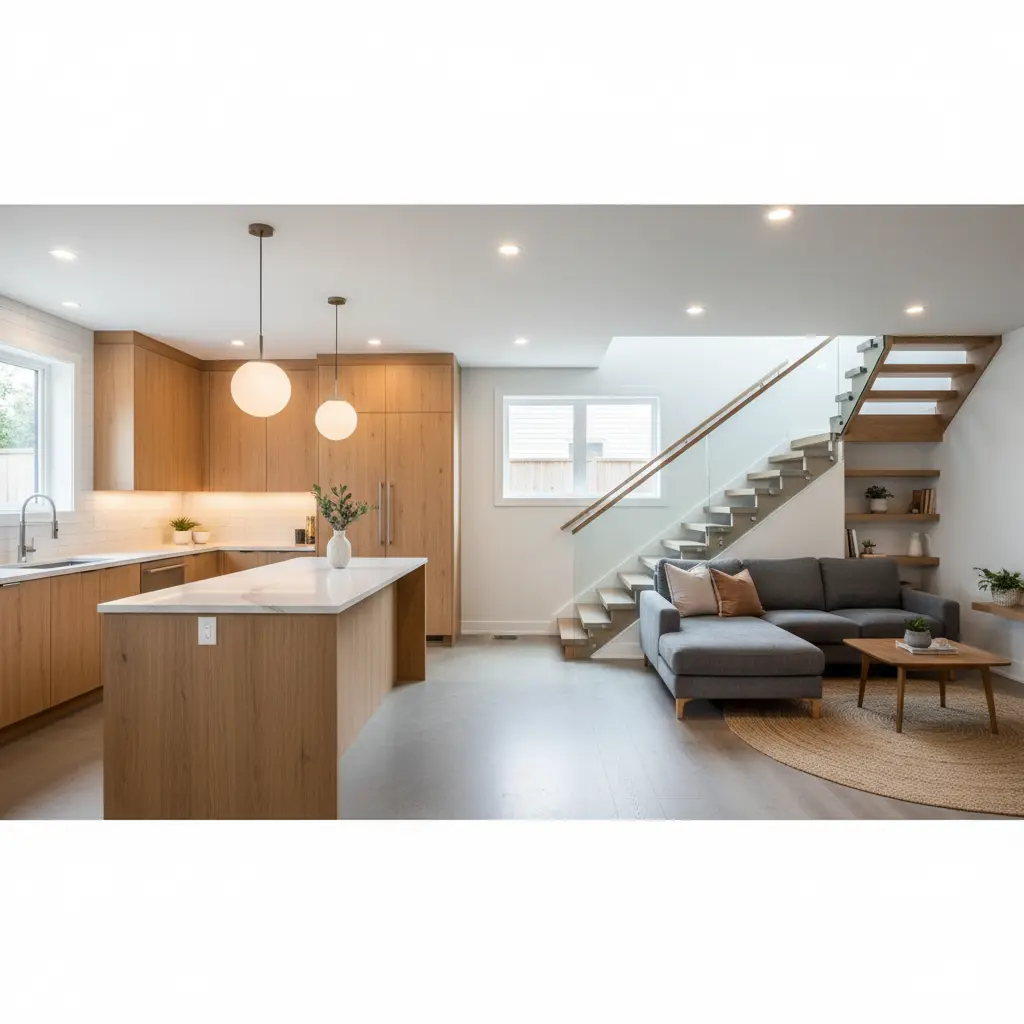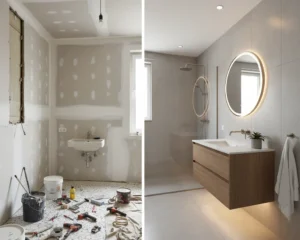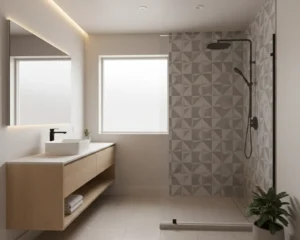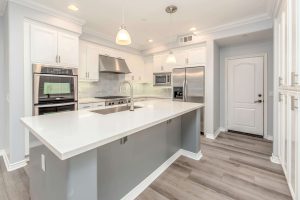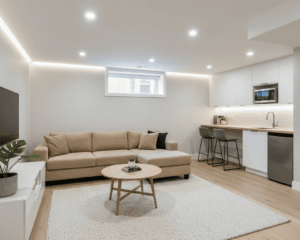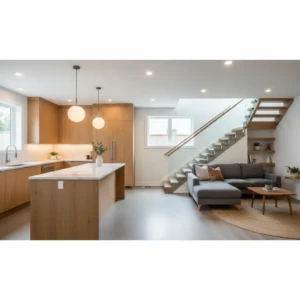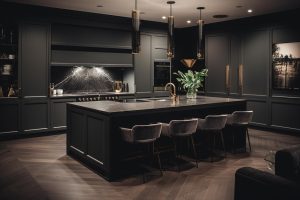Choosing the right materials for renovation is one of the single biggest decisions a homeowner makes; it shapes how your home looks, how long the investment lasts, and how well the space performs in Edmonton’s climate. Whether you’re planning a kitchen refresh, finishing a basement, or redoing flooring throughout the house, the materials you pick affect durability, maintenance, energy efficiency, and resale appeal.
At Steadfast Constructions Ltd., we help Edmonton homeowners select renovation materials that strike the balance between style, longevity, and value. In this guide, you’ll find practical advice on choosing renovation materials, a checklist for basement and kitchen projects, strategies for finding good-quality second-hand or recycled materials, and local considerations that matter in Alberta’s weather. You’ll also find trustworthy resources and actionable tips that will make conversations with contractors and suppliers more productive.
Start with long-term performance and suitability.
When thinking about materials for renovation, start with function before fashion. A material that looks stunning but fails in Edmonton’s freeze-thaw cycles or in a high-moisture basement will cost you time and money down the road.
Key selection principles:
- Durability: Choose materials that resist wear and moisture in the specific room. Kitchens and mudroom floors need different durability standards than bedrooms.
- Climate suitability: Edmonton’s cold, dry winters and seasonal humidity swings demand materials that are dimensionally stable and tolerant of temperature changes. Engineered materials often outperform solid materials in these conditions.
- Maintenance profile: Pick surfaces you’re willing to maintain. High-gloss cabinetry and open shelving look great but require more cleaning than matte finishes or enclosed storage.
- Sustainability and lifecycle: Increasingly, homeowners choose materials with recycled content, low VOCs, or that can be reclaimed and reused. The Government of Canada and CMHC publish guidance on sustainable renovation strategies and durability; they’re good starting points when assessing long-term performance. (See CMHC resources for sustainable housing.)
- Resale and aesthetics: Bold design choices should be balanced with appeal to future buyers. When in doubt, make statement decisions in interchangeable elements (backsplash, hardware, island) and keep structural elements neutral and high quality.
Steadfast tip: Always match the material choice to the room’s function. What’s appropriate for a kitchen island may not be suitable for a basement floor or an exterior-entry mudroom.
Kitchen renovation materials that last and delight
The kitchen is the project where materials matter most: cabinetry, countertops, backsplashes, flooring, and hardware all define daily use.
Cabinetry and joinery
- Core idea: Choose cabinetry materials and construction that resist humidity and frequent use. In Edmonton, engineered plywood cabinets with a durable finish outperform particleboard in the long run. Look for cabinets with solid plywood carcasses, dovetailed drawers, and a finish rated for kitchen environments.
- Finish choices: Avoid high-gloss lacquer in heavy-use family kitchens unless you’re prepared for maintenance. Matte or satin finishes hide minor wear and are forgiving.
- Custom vs. semi-custom vs. stock: Custom cabinetry offers exact fit and unique storage solutions; semi-custom hits a balance between customization and cost; stock is quicker to deliver but may lack the features that save daily time (appliance garages, deep drawers). Steadfast Constructions Ltd can advise which route makes sense for your layout and lifestyle.
Countertops and backsplashes
- Countertops: Choose surfaces that match your usage. Engineered quartz is popular for its durability and low maintenance; honed natural stones provide character but require more care. Consider edge detail and seam placement during design.
- Backsplashes: Backsplashes are design anchors. Large-format tiles and full-height slabs create streamlined looks, while patterned tiles add character. Use robust grout and waterproof backing behind cooking areas.
Flooring and underfoot considerations
- Flooring practicality: Kitchens require surfaces that take spills, dropped dishes, and heavy foot traffic. Waterproof or water-resistant options, such as quality luxury vinyl plank (LVP) or engineered wood with a water-resistant core, are practical for Edmonton’s wet boots season.
- Subfloor and underlayment: A proper subfloor and underlayment reduce movement and squeaks, improving the longevity of any floor finish.
Basement renovation materials checklist
Basements are below grade and face distinct challenges; moisture control and insulation take priority. A targeted basement renovation materials checklist makes planning easier.
Foundations and waterproofing
- Moisture control first: Before finishing, address waterproofing, drainage, and vapor control. Use appropriate membranes, sealed penetrations, and consider a sump or perimeter drainage if the situation requires. The Government of Canada encourages waste prevention and reuse, but also stresses durability and resilience in housing projects. (See useful guidance on construction waste and reuse.)
- Insulation choices: Use insulation systems suited for below-grade walls and floors; closed-cell spray foam or rigid foam board are common for foundation walls to prevent condensation and bridge cold surfaces.
Walls, floors, and ceilings
- Framing systems: Use steel or treated lumber where required to prevent moisture damage; leave service cavities for easy access to plumbing and wiring.
- Wall finishes: Moisture-resistant gypsum or cement board around wet areas; durable finishes like painted fibre-reinforced panels may be preferable in high-traffic family rooms.
- Flooring: Avoid solid hardwood. Engineered products, LVP, or modular carpet tiles made for basements are practical choices. Use decoupling underlayments where slab movement is possible.
Safety and code-compliant elements
- Egress: Bedrooms require egress windows that meet local code. Use window assemblies rated for below-grade use and specify window wells that are easy to maintain.
- Fire separation and soundproofing: Use sound attenuation insulation and appropriate fire-rated assemblies where required by code.
Steadfast advice: We begin basement projects with a thorough moisture assessment and a materials plan focused on long-term performance and low-maintenance finishes.
Eco-friendly, second-hand, and used options
Using second-hand materials or reclaimed elements is a strong way to save resources and add character, but it needs care.
Second-hand renovation materials: Where to find them and how to vet
- Sources: Salvage yards, deconstruction contractors, online marketplaces, and community reuse centres often have doors, windows, flooring, and fixtures in good condition.
- What to check: Inspect for structural soundness, rot, warping, or hidden damage. For items like windows, check glazing condition, frame integrity, and whether they meet current energy standards for your project.
- When used, it makes sense: Architectural elements, reclaimed wood, solid doors, and decorative tile are often good candidates. For wet areas or safety-critical components (gas appliances, electrical panels), buy new.
Cheap renovation materials vs. value renovation materials
- Cheap doesn’t always equal value: Low-cost materials may save money up front, but create higher maintenance and replacement costs. Consider lifecycle value, a well-chosen mid-range product can outperform cheap alternatives and create a better long-term investment.
- Mix-and-match approach: Use higher-grade materials in visible, high-use zones and economical alternatives in hidden or less-used areas.
Environmental and circularity considerations
- Circular construction: Canadian policy and industry groups are increasingly supporting reuse, recycling, and deconstruction to reduce landfill waste. When possible, plan for salvaging and reusing materials from your own project or work with contractors who separate waste streams for recycling. See government guidance on waste hierarchy and reuse.
- Low-VOC and healthy materials: Choose finishes and adhesives with low volatile organic compounds (VOCs) for better indoor air quality.
Local considerations in Edmonton: climate, supply chain, and sourcing
Edmonton introduces local constraints and opportunities that should shape material choices.
Edmonton climate and material behavior
- Temperature swings and dryness: Materials that expand and contract less with temperature and humidity are preferable for long-term stability. Engineered products are generally more forgiving than solid woods in this climate.
- Snow, salt, and entryways: Choose durable, scratch- and salt-resistant flooring for mudrooms and entry halls. Matte, textured finishes hide wear compared with glossy surfaces.
Local sourcing and supplier relationships
- Lead times and availability: Local suppliers reduce delivery uncertainty and allow you to inspect materials before purchase. Steadfast Constructions has established relationships with Edmonton suppliers and can recommend locally proven products that perform in Alberta conditions.
- Supporting local and practical picks: Choosing local manufacturers or regional distributors reduces transportation impacts and often speeds delivery.
How contractors (and homeowners) should evaluate product claims
Manufacturers make many performance claims. Here’s a practical way to assess them.
Product certifications and useful standards
- Look for third-party certifications: Certifications like Forest Stewardship Council (FSC) for wood, GREENGUARD or similar low-VOC labels, and recognized testing standards give more reliable information than marketing copy.
- Ask for datasheets and warranties: Request technical data and ask how the product has performed in local installations. Steadfast Constructions reviews datasheets and provides references for product performance to homeowners.
Installation matters as much as the product.
- Correct installation is critical: A high-quality waterproofing membrane installed improperly will fail; a durable countertop needs proper support and seam planning. Choose experienced trades and insist on manufacturer-recommended installation methods.
A kitchen and basement material plan for an Edmonton family home
When an Edmonton family approached Steadfast for a kitchen and basement renovation, our material strategy focused on durability, low maintenance, and personality.
- Kitchen: Engineered plywood cabinetry with a durable satin finish, quartz countertops for spill resistance, LVP flooring extending into the mudroom for continuity and moisture resistance, and a full-height porcelain slab backsplash behind the range as a design focal point. We used a mix of concealed storage and open shelving for display.
- Basement: Sub-slab moisture assessment and membrane where necessary, rigid foam insulation at foundation walls, painted cement board in wet zones, engineered LVP for main areas, and sound-dampening insulation between floors. Egress window wells and fire-rated doors were specified to meet code.
The result was a cohesive material palette that balanced visual warmth with practical performance and minimal callbacks in the first year.
Practical checklist: Choosing materials for renovation (what to bring to your contractor meeting)
Before your first meeting with a contractor, bring:
- A list of daily activities and pain points (how you use the kitchen, where kids make a mess, etc.).
- Inspiration photos showing specific finishes you like.
- Any material preferences (reclaimed wood, low-VOC finishes) or restrictions (dog-friendly flooring, barefoot comfort).
- A list of rooms where you want higher durability (entry, kitchen, basement).
- Questions about local sourcing, lead times, and warranty coverage.
Steadfast Constructions uses these details to prepare a materials plan that aligns performance, appearance, and maintenance expectations for Edmonton living.
Conclusion
Choosing materials for renovation is both a practical and aesthetic decision. The right materials solve moisture and durability problems, perform in Edmonton’s climate, and let your personality shine. Start by prioritizing function, waterproofing, insulation, and durability, then layer in finishes that reflect your taste. Consider reclaimed or second-hand materials for character, but verify suitability for the application. Finally, work with a contractor who understands local conditions and can coordinate suppliers, installation, and warranty follow-through.
Steadfast Constructions Ltd. helps Edmonton homeowners make these choices easy. We provide a materials planning session as part of our renovation services, sourcing local options, vetting manufacturers, and coordinating trades to ensure your new finishes look great and last. If you’re planning a kitchen remodel, basement finish, or whole-home upgrade in Edmonton, contact Steadfast Constructions Ltd. to schedule a materials consultation and project review. We’ll help you choose renovation materials that fit your lifestyle and stand up to Alberta’s seasons.
Frequently Asked Questions (FAQs)
Q1: How do I decide which materials for renovation are right for my Edmonton home?
A1: Start with function and room use: prioritize moisture resistance in basements and kitchens, durability in entryways, and comfort in living rooms. Consider Edmonton’s climate — choose engineered or moisture-tolerant products, and ask your contractor about local performance history.
Q2: Are second-hand renovation materials a good option?
A2: Yes, when vetted carefully. Reclaimed wood, vintage fixtures, and solid doors can add character and value. Inspect items for structural integrity, rot, and compatibility with current codes; avoid second-hand for safety-critical systems like gas appliances or electrical panels.
Q3: Which kitchen renovation materials are low-maintenance and perform well in Alberta?
A3: Engineered plywood cabinets with durable finishes, engineered quartz counters, and waterproof or water-resistant flooring options like luxury vinyl plank are practical choices. Pair these with low-VOC paints and easy-clean backsplash materials.
Q4: How can I make my basement finishes last longer?
A4: Start with proper moisture management: a qualified assessment, appropriate waterproofing, and insulation. Use moisture-resistant wallboard, engineered flooring, and installation methods that allow water to be detected and removed if it occurs.
Q5: How do I verify manufacturers’ claims about sustainability and durability?
A5: Ask for third-party certifications and technical datasheets. Look for recognized labels such as FSC for wood, low-VOC certifications for finishes, and manufacturer warranties. Your contractor should be able to show examples of local installs and warranty processes.

